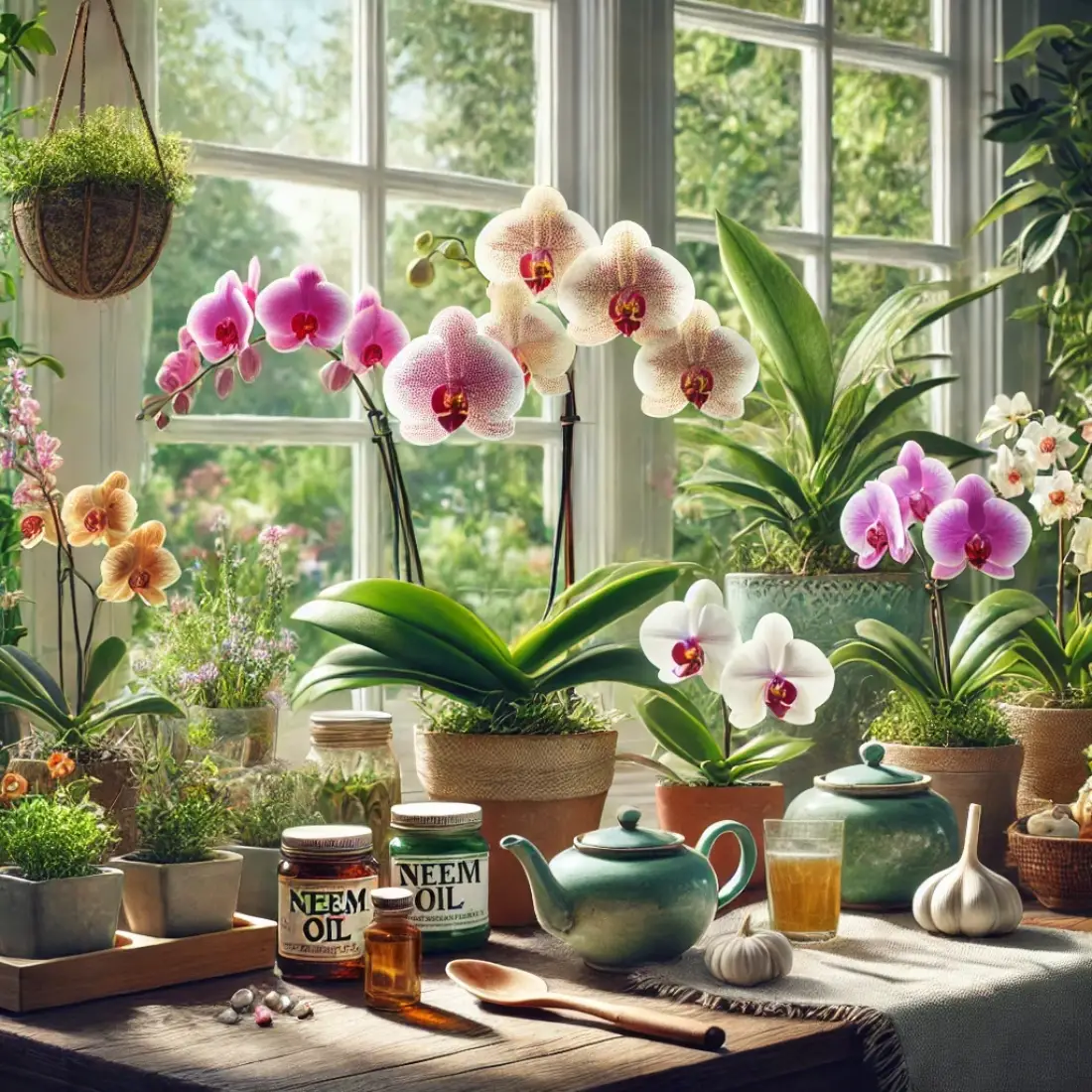Orchids are stunning flowers that add elegance and beauty to any space, but they can be challenging to care for. When problems arise, many people worry about using harsh chemicals. Fortunately, there are effective organic methods to solve common orchid issues.
- Organic methods are effective for treating orchid problems.
- Identifying issues early can save your orchids.
- Simple, natural remedies can often solve complex problems.
Common Orchid Problems
Knowing how to identify and address these issues with organic methods can make a significant difference in the health and longevity of your orchids. Here are some of the most frequent problems orchid enthusiasts encounter:
Yellow Leaves
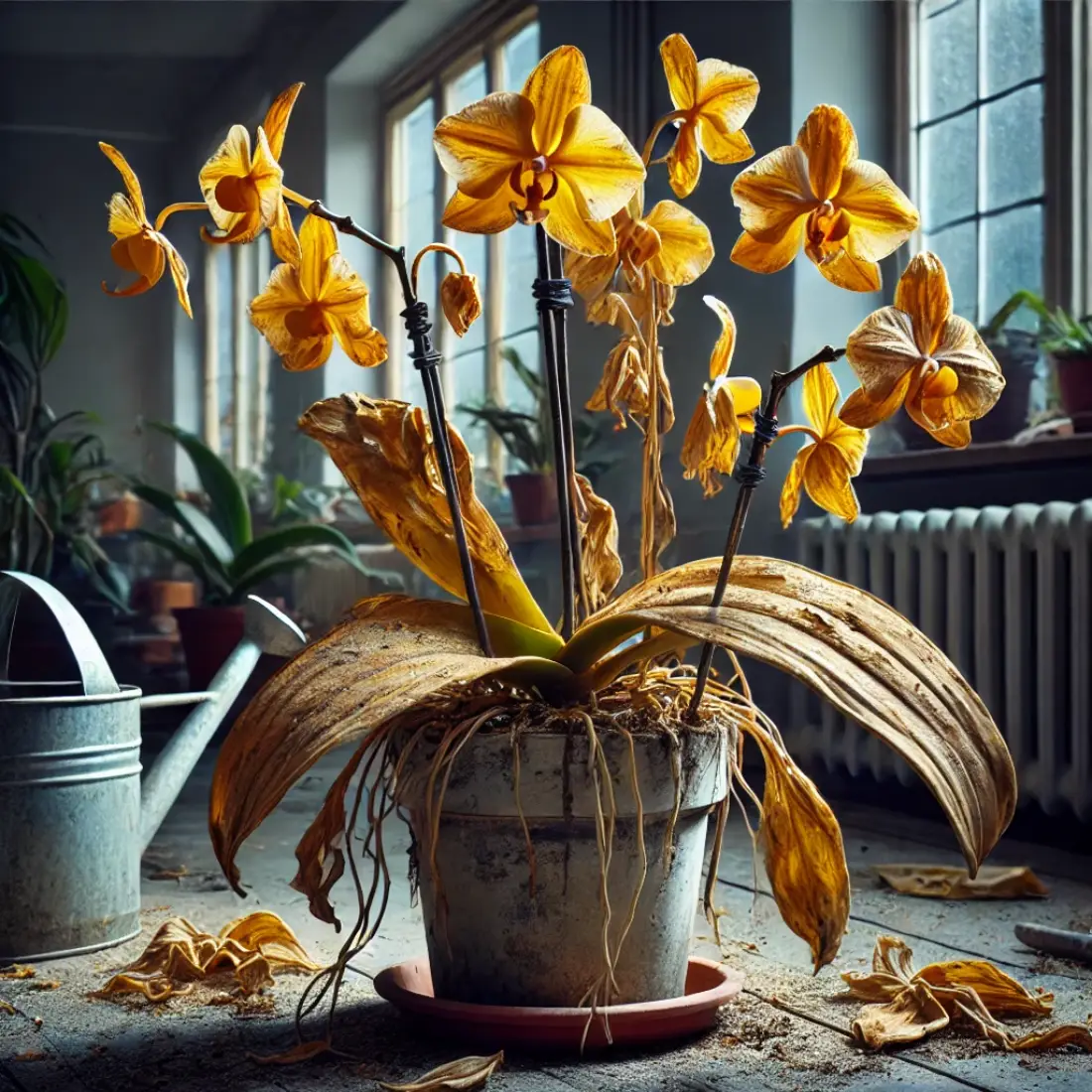
Yellow leaves are a common problem for orchid growers and can be caused by several factors. Overwatering is a frequent issue, leading to root rot and poor nutrient absorption. Ensure you are not watering your orchid too frequently and that the potting medium allows for adequate drainage.
Conversely, underwatering can also result in yellow leaves, as the plant becomes dehydrated and stressed. To prevent this, establish a consistent watering schedule that keeps the roots moist but not waterlogged.
Nutrient deficiencies, particularly in nitrogen, magnesium, and iron, can cause leaves to turn yellow. Using an organic fertilizer designed for orchids can help provide these essential nutrients. Additionally, ensuring your orchid gets enough indirect light is crucial, as insufficient light can also lead to yellowing leaves.
Root Rot

Root rot is a serious issue for orchids, primarily caused by overwatering and poor drainage. Signs of root rot include mushy, darkened roots and a foul smell. To treat root rot organically, start by gently removing the orchid from its pot and inspecting the roots. Trim away any affected roots with sterilized scissors.
Repot the orchid in a fresh, sterile medium, such as bark or sphagnum moss, ensuring the pot has adequate drainage holes. To prevent future occurrences, water the orchid only when the potting medium is dry to the touch.
Applying natural fungicides like cinnamon powder to the roots before repotting can help prevent fungal growth. Additionally, ensure the orchid receives plenty of air circulation around its roots to keep them healthy and dry.
Pests and Insects
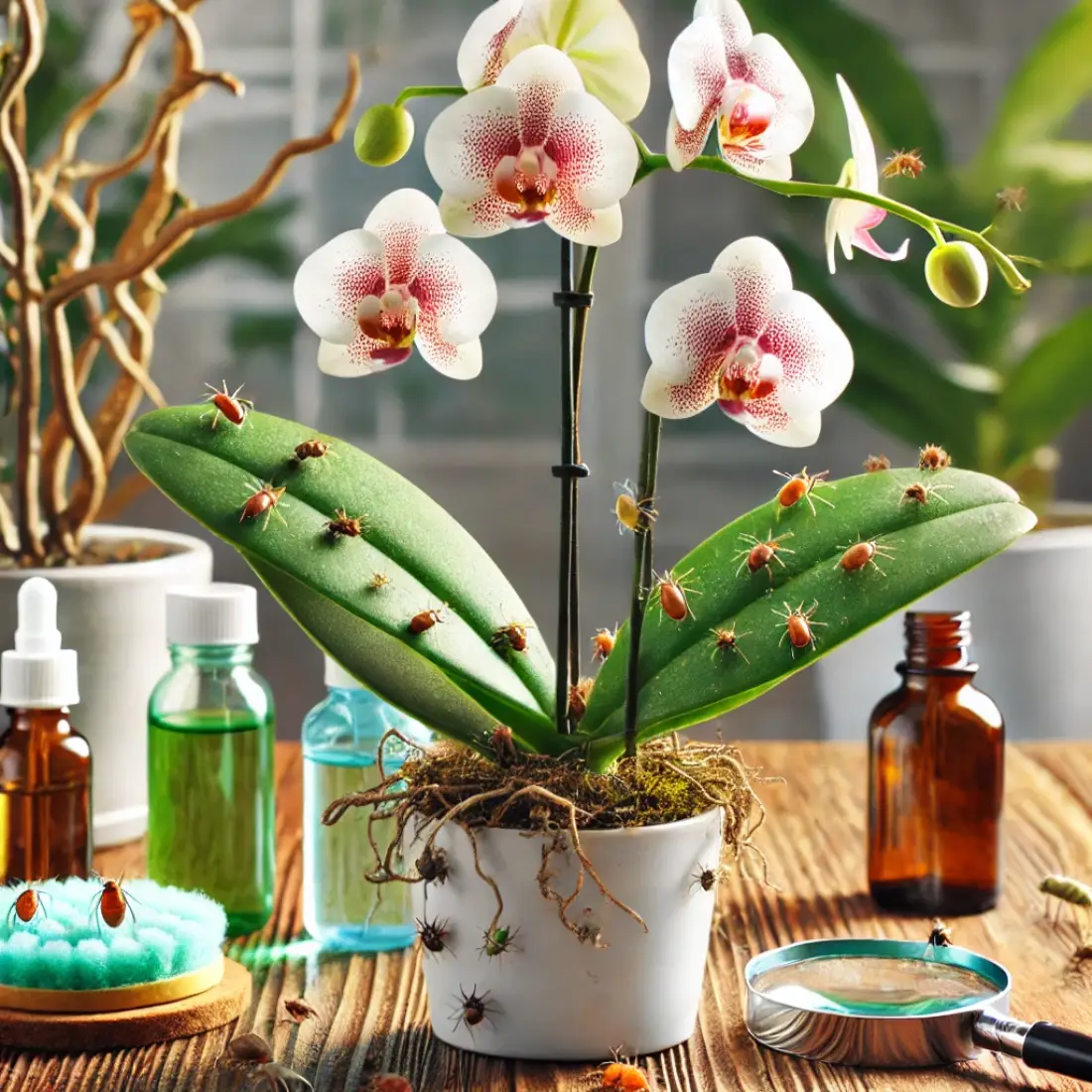
Orchids can be plagued by various pests, such as aphids, spider mites, and mealybugs. These pests can cause significant damage by sucking sap and spreading diseases. Identifying and treating these infestations early is crucial to maintaining healthy orchids.
Neem oil spray is an effective organic solution. Mix neem oil with water and a few drops of dish soap, then spray it on the affected areas. This natural pesticide repels and kills pests without harming your orchid.
Insecticidal soap is another organic method. This soap suffocates pests on contact and can be made at home using water, liquid soap, and vegetable oil. Spray it directly on the insects.
Introducing beneficial insects like ladybugs and predatory mites to your growing area can also help control pest populations naturally.
Fungal Infections
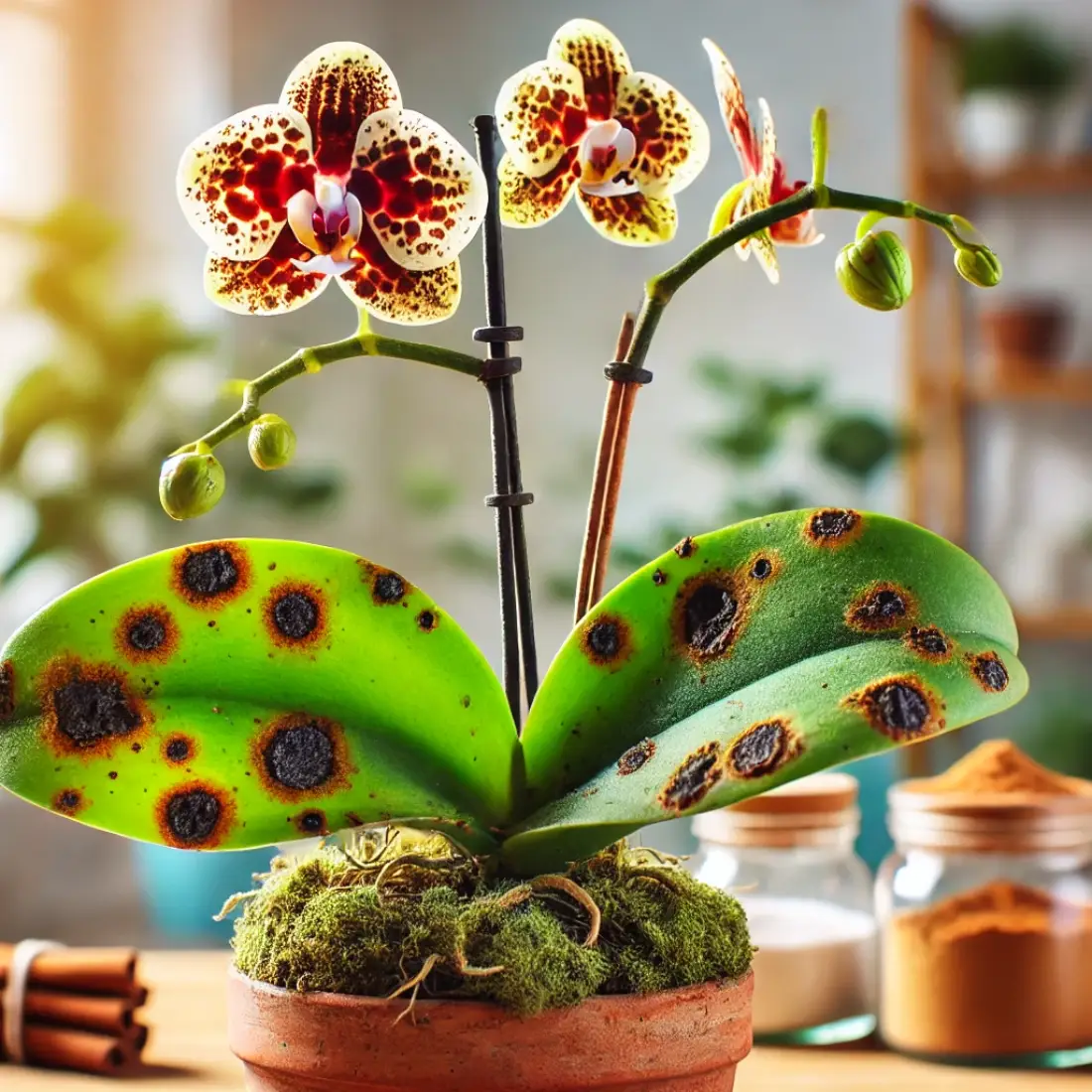
Fungal infections are a common problem for orchids, manifesting as black rot or leaf spot. These infections can spread quickly, damaging leaves, stems, and roots. Black rot appears as dark, water-soaked spots, while leaf spot presents as small, dark lesions on leaves.
To treat fungal infections organically, start by removing the affected areas with sterilized scissors. Apply cinnamon powder to the cut surfaces as it has natural antifungal properties. For a broader application, a baking soda solution can be used; mix one teaspoon of baking soda with one quart of water and spray it on the affected areas.
Improving air circulation around your orchids is crucial in preventing fungal growth. Ensure your orchids are not overcrowded and are placed in a well-ventilated area.
Insufficient Blooming
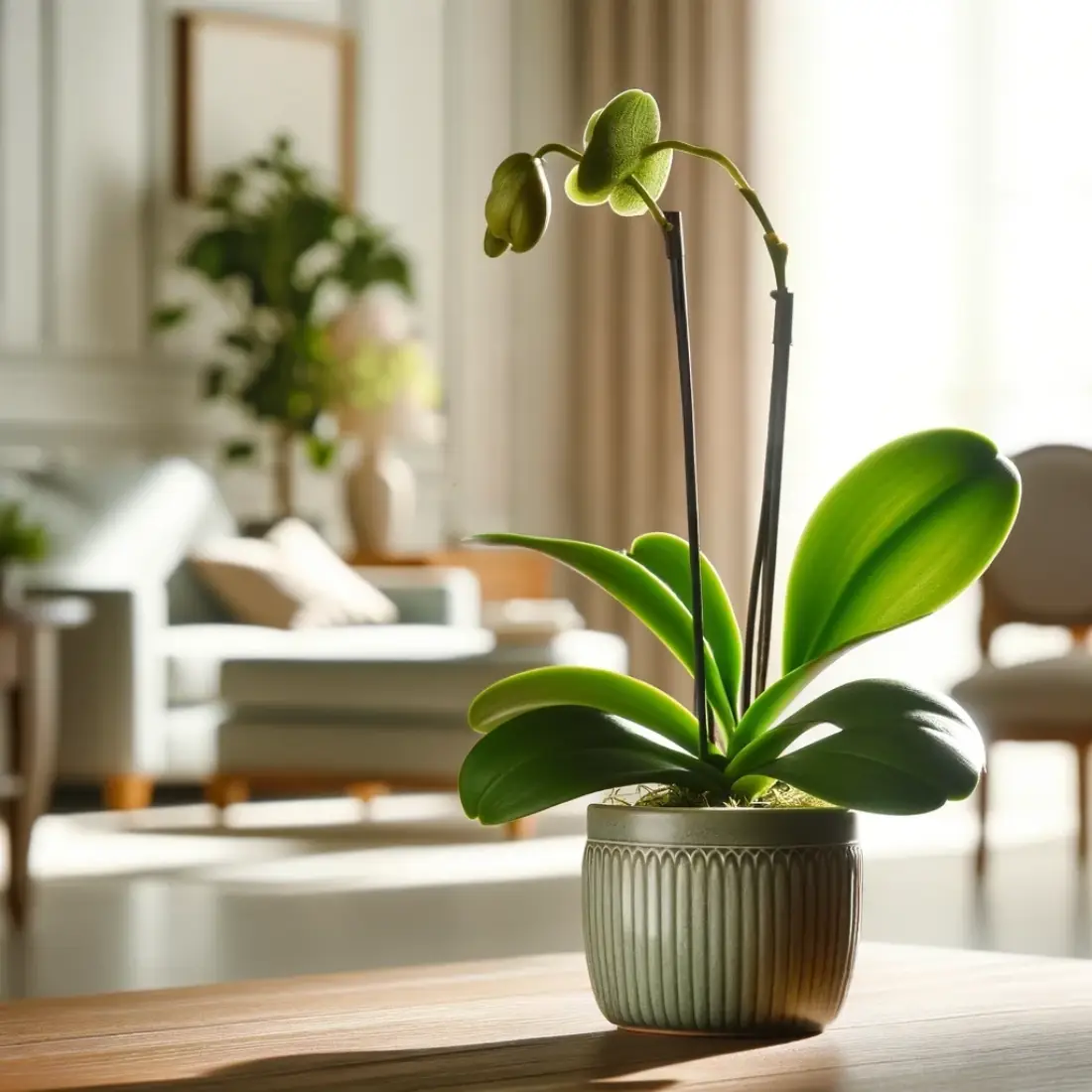
A lack of blooms is a frustrating problem for orchid enthusiasts. Common causes include improper lighting, nutrient imbalances, and inadequate temperature conditions.
Ensure your orchid receives enough indirect light. Orchids need bright, indirect sunlight to bloom. Place them near a window where they can get sufficient light without direct exposure.
Nutrient imbalances can also prevent blooming. Use a balanced organic fertilizer, specifically formulated for orchids, to provide the necessary nutrients. Fertilize every two weeks during the growing season and reduce feeding in the dormant period.
Temperature regulation is another crucial factor. Orchids generally require a drop in nighttime temperatures to initiate blooming. Ensure the nighttime temperature is about 10-15 degrees cooler than the daytime temperature.
FAQs about Common Orchid Problems
What causes orchid leaves to turn yellow?
Orchid leaves can turn yellow due to overwatering, underwatering, or nutrient deficiencies. Ensuring a proper watering schedule and using organic fertilizers can help address this issue.
How can I prevent root rot in orchids?
Prevent root rot by ensuring proper drainage, watering only when the potting medium is dry, and using a fresh, sterile medium. Applying natural fungicides like cinnamon powder can also help.
What are natural ways to get rid of pests on orchids?
Natural pest control methods include using neem oil spray, insecticidal soap, and introducing beneficial insects like ladybugs to control pest populations.
How do I treat fungal infections on my orchids organically?
Treat fungal infections by removing affected areas, applying cinnamon powder, and using a baking soda solution. Ensure good air circulation around your orchids to prevent fungal growth.
Why is my orchid not blooming, and how can I fix it?
Orchids may not bloom due to improper lighting, nutrient imbalances, or inadequate temperature conditions. Provide bright, indirect light, use balanced organic fertilizers, and regulate temperature to encourage blooming.
How often should I water my orchids?
Water your orchids when the potting medium is dry to the touch, typically once a week. Ensure the pot has proper drainage to prevent waterlogging and root rot.
What is the best potting medium for orchids?
The best potting medium for orchids includes materials like bark, sphagnum moss, or a mix of both. These materials provide good drainage and aeration for the roots.
Can I use household items to treat orchid problems?
Yes, household items like cinnamon powder and baking soda can be used to treat fungal infections. Neem oil and insecticidal soap, which can be made from household ingredients, are effective for pest control.
How do I improve air circulation around my orchids?
Improve air circulation by spacing your orchids apart, using fans, and ensuring they are not placed in enclosed or overly humid environments. Good air movement helps prevent fungal and bacterial infections.
What type of light is best for orchids?
Orchids thrive in bright, indirect light. Place them near windows with filtered sunlight or use grow lights to provide adequate illumination without direct exposure.

